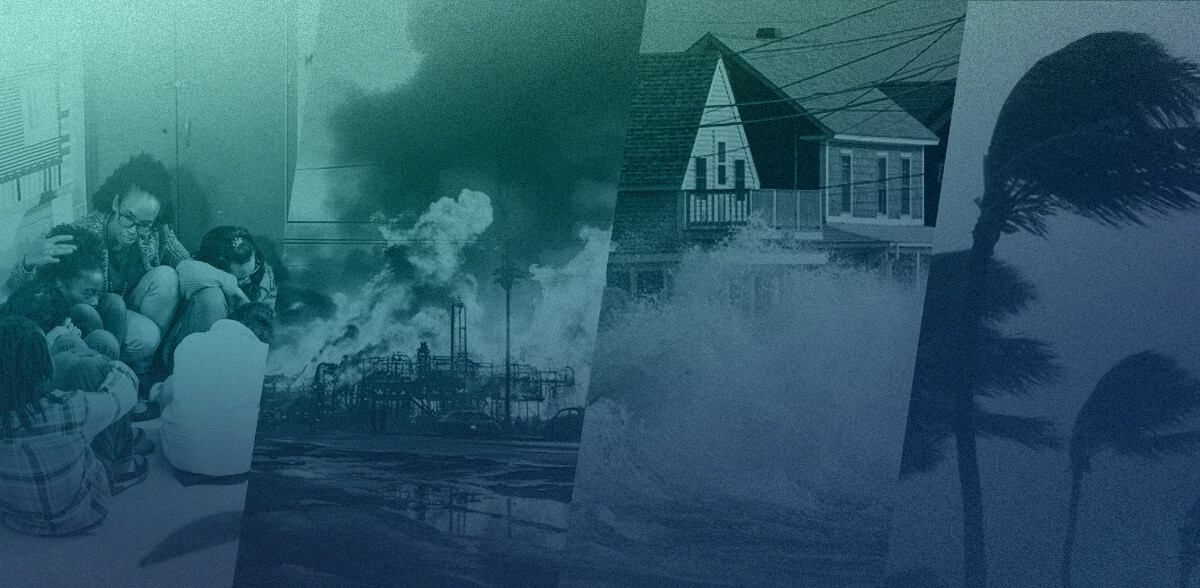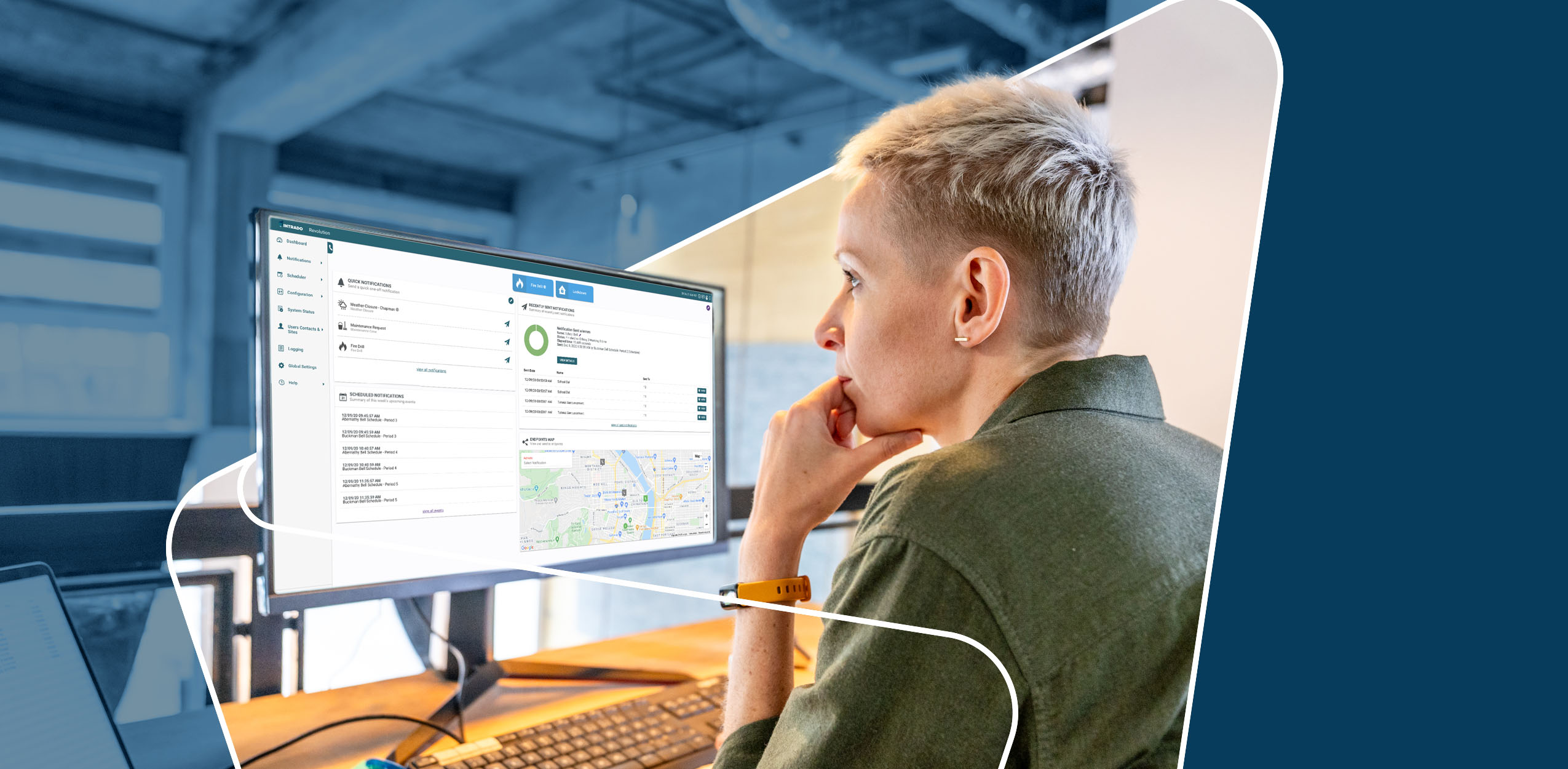National Preparedness Month – Prepare for the Unexpected with Intrado’s Emergency Solutions
September is FEMA’s National Preparedness Month, a crucial time dedicated to raising awareness about the importance of preparing for emergencies,...
3 min read
By Stefanie West, Marketing Manager
Jan 9, 2024
Emergency mass notification systems are used to send alerts to groups and individuals during a crisis. They help inform staff, students, parents, and emergency responders throughout the incident.
In this blog, we'll share a variety of emergency-related terms that can help your school better understand its emergency mass notification plan. Misunderstanding a term included in a plan or during a crisis can cause confusion and could lead to a harmful situation, such as confusing lockdown with lockout. We hope this glossary serves as a helpful guide for your district.
Glossary of Emergency Terms:
911 Services– The telephone number used to reach emergency services in the US and Canada (police, fire department, or ambulance).
Abandon Call– An Abandoned Call is an emergency Call in which the caller disconnects before the Call can be answered by the PSAP (Public Safety Answering Point).
Active Shooter– An individual who is presently using a gun to shoot people in a confined and populated area.
Call Center – An office or department set up to handle a high volume of phone calls for an enterprise (ex. 911 dispatch call center).
Crisis– A stage in a sequence of events at which the trend of all future events, especially for better or for worse, is determined.
Disaster– A calamitous event, especially one occurring suddenly and causing great loss of life and damage.
E911– Enhanced 911 rules seek to improve the effectiveness and reliability of wireless 911 services by providing 911 dispatchers with additional information on wireless 911 calls.
Emergency– A sudden, urgent, usually unexpected occurrence or occasion requiring immediate action.
2. Emergency Call Controller. The component of the ECMC responsible for routing emergency calls from an SBC to an appropriate PIM.
Emergency Planning– The intended response to an unexpected, serious and dangerous occurrence. Emergency planning may involve preparation and planning for a natural or manmade disaster, accidents, breach of security, medical emergencies, and more.
Emergency Alert System– A national public warning system that allows the president to address the nation within 10 minutes during a national emergency.
Evacuation– The removal of persons or things from an endangered area.
Hazard– An unavoidable danger or risk, even though often foreseeable.
Lockdown– A security measure taken during an emergency to prevent people from leaving or entering a building or other location. “Secure in place” is another commonly used term for “lockdown.”
Lockout– A situation where occupants secure the exterior of a building. A lockout is typically in response to a dangerous situation nearby in which building administrators or local law-enforcement believe it is not safe to be outside the building.
Multi-Modal Communication– Having more than one method of communication.
National Emergency– A situation in the United States in which the President exercises their emergency powers. Governors and mayors declare states of emergency in response to disasters (e.g., after hurricanes).
Natural Disaster– Natural disasters include all type of severe weather, which have the potential to pose a significant threat to human health and safety, property, critical infrastructure, and homeland security.
Preparedness– The measures that ensure the organized mobilization of personnel, funds, equipment and supplies within a safe environment for effective relief.
Public Safety Answering Point (PSAP)– When 911 is dialed, the call is routed to the proper PSAP call center based on the caller’s location. The PSAP has special equipment that allows it to automatically receive both the caller’s phone number and civic address so even if the caller cannot speak, the PSAP knows where to send first responders.
Response– The set of activities implemented after the impact of a disaster in order to assess the needs, reduce the suffering, etc.
Secure– Guarded so that no one can enter or leave without approval.
Shelter in Place– An official order, issued during an emergency, that directs people to stay in the indoor place or building that they already occupy and not to leave unless absolutely necessary.
Threat– An indication or warning of probable trouble, or of being at risk for something terrible.
Vulnerability– The predisposition to suffer damage due to external events.
These emergency related terms can help you prepare and plan in case of a real emergency scenario. Intrado Safety Suite offers solutions that help schools manage emergency situations and communicate incident information to people more efficiently and reliably. To learn more about Safety Suite, click here.

September is FEMA’s National Preparedness Month, a crucial time dedicated to raising awareness about the importance of preparing for emergencies,...

Intrado Revolution is an emergency mass notification system that unifies disparate technology into a...

A strategic — and well-tested — emergency plan can help staff respond effectively in a crisis. Emergency planning is something we all know we should...

To be prepared for emergencies, schools should review their mass notification systems and...